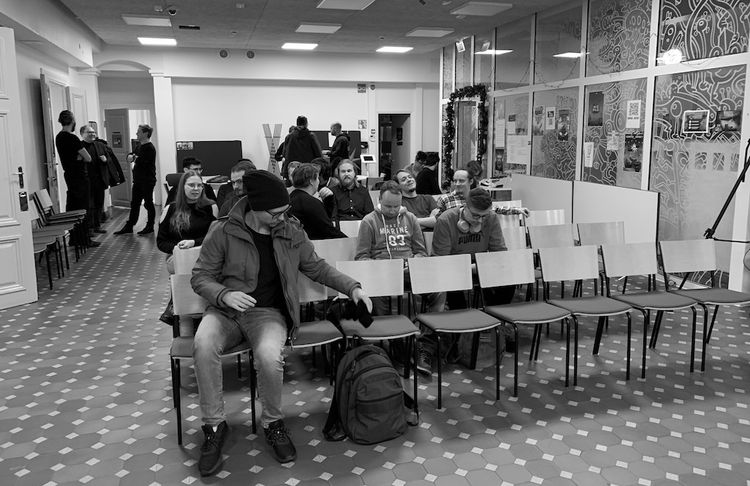Games Company Culture Pyramid
I’ve often thought about how to visualize an ideal game company culture. The pyramid felt like an excellent way to think about it: you have a foundation, then things come on top, finally reaching a peak, which is successful games.
Here’s how I want to explain all the four layers, starting from the foundation, which is the people.
People
It’s all about people and their behaviors, how they treat others and is the group made out of diverse individuals.
Safety, upholding a feeling of psychological safety, creates a relaxing sense for everything that happens at work.” You are safe” is what kids feel when they are with their parents. That’s how leaders should treat their employees with similar feelings of safety.
Belonging, which is a saying like “You belong here.” Each new employee is a new node on the network of people in the company. It becomes more challenging as more people join, but people will feel that they belong through shared rituals of gratitude.
Service, you check the ego at the door, and you work for the company’s good. You are serving a cause, a belief that is shared by everyone.
Diversity, you need people from different cultures, a mix of gender, a variety of ages. If you exclude people from your group, knowingly or unknowingly, you will alienate people from your company, and worse, from diverse thoughts which would lead to unique ideas.
Learning
Learning is about understanding the ways that you and your team get better at their work every day.
We are trying things, leaving time for experimentation. As I wrote in EGD News 44, to make decisions at the concept or prototype stage is a coin toss. But that is not where we should focus on if we want to defy the hit-driven nature of the games business. The focus should be on the systems that the developer relies on, how the systems reveal insights and how they support our discussions, and how they make us take quick actions and experiments.
Building, every day having the mantra that we need to build, and then we will know and have outcomes. Many game ideas are great on paper but don’t turn out that great when put together into a prototype. Some gaming projects might last for months before they see the light of day on an actual device. Smart developers move quickly to conduct game development in public, by launching alpha or beta versions of the game to the market and iterating through live updates. By continually building, you create more chances for learning and you improve your odds at finding success.
Talking and listening
Communication is wholly tied to learning.
When we communicate, most of the learning comes from listening. You have an opinion but try to treat that opinion as to the correct one only for now. You might be missing something, and new evidence can be revealed through communication with others.
There are limits and barriers: over Zoom is worse than face-to-face, words aren’t often specific enough. Cultural: individual histories, context, conditioning. A battle between logic versus emotions drives thinking.
Listeners are honored as they take an interest in understanding other people’s positions. They don’t seek to show off how smart they are.
Creativity
Creativity is about coming up with ideas. The mind brings up these ideas, which have been assembled inside our heads.
To generate these ideas, you combine old things. For these combinations to work, the game developer needs to see the relationships between these old things.
What makes creativity so unique for individuals is that games consist of millions of old things and millions of new things that haven’t yet been brought to gaming through these relationships.
By having a diverse group of people around the table, you allow for unheard-of relationships between old and new things get assembled and brought up.
Data
To validate opinions, to know if something is correct or not, and to make decisions, game developers need data.
Data has gotten a bad rep in game development, mainly because creativity lost its role in the decision making process. Often, the data can’t be interpreted with full clarity without understanding the creative ideas behind the hypothesis.
The beauty of data in gaming comes from having thousands of players playing the game. With the statistical accuracy of their actions, we can pinpoint new findings. We can compare how our work has improved the game and how quickly we can move to the next thing on the list.
Execution
The quality of execution results from having the right people and the right learning systems in place. Execution is about the engine revving and all the pieces functioning perfectly.
Moving quickly
After you have the behavioral and the learning systems in place, what kind of velocity can you achieve? Another way is to ask how much you can achieve in a specific time. And once the first game is out, is your team still alive and willing to build the next game?
Making the best decisions
Decision making becomes more accurate as you have all the underlying foundation in place.
When you have great systems in place, you learn not to fall into the traps that lead to bad outcomes.
You figure out that worse decisions happen when you pursue information that appears relevant but isn’t.
You notice that setting goals is fine, but setting arbitrary goals will not get you anywhere. Instead, working on a slow upwards trajectory is healthier for the culture.
Rely on the best systems, and the best decisions will become standard in your company.
Games
Great games don’t come from hero designers having a great game in them. They don’t come from looking at the top-grossing charts and mashing up a few games from the list.
The people, the learning systems, and the execution will result in great games.
Final words
I hope this visualization of company culture can help people get a picture of where certain things reside and what makes the most sense. Happy to hear comments on this on social media, and please do reach out to me on LinkedIn!





